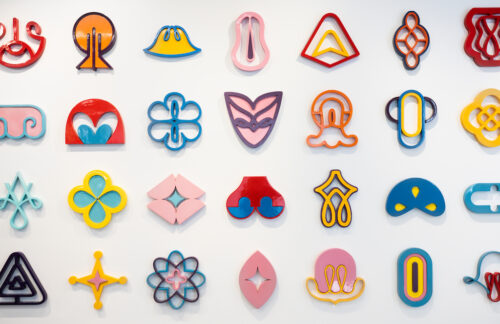In a prior discussion we had, you described your practice as “multidisciplinary.” In what ways are you multidisciplinary and how has this label impacted your sense of your (artistic) identity?
Hmm… I don’t know about multidisciplinary. I choose to say I’m an illustrator because of the freedom it gives me to work with many different kinds of art-making, and many different kinds of artists. The crux of it is visual storytelling, but I like that it means I could make an erotica zine today, and work on a children’s book the next.
I teach art for the same reason that I make it—each day of walking into the classroom or my studio feels different, and I’m always so excited for the potential of what’s going to happen in the next few hours. It took me a while to talk myself out of trying to develop a trademark style or way of working, which is such a huge part of art discourse right now: develop a style, develop a signature, have your name become a brand. I’m just not convinced that’s where artistic innovation flourishes.
I find myself happiest when I’m bouncing around doing multiple things – I make comics, I do printmaking, I do some editorial digital illustration, I do sketchbook and visual journalism-focused projects. I’m presenting a paper at an illustration research symposium later this year. I used to make murals for a living in my pre-Baltimore life and I’m dying to do more murals this year. I like being in flux, because I have the kind of brain that tires of doing the same thing over and over.
My goal for being a working artist is mostly to not be bored to death the same way I would at a productivity-centered desk job. Art is where I see the possibility of constant reinvention, and that’s what I’m here for.
Words, writing, and narrative are, you’ve said, particularly important in your practice. Do you have a favorite word or phrase? Where did you first encounter it?
I spent most of my teen years buried in a book, or complaining about existence in my diary. I initially studied literature and film in university because I wanted to be a journalist or writer of some sort. That has morphed into this love of visual narrative because I think my sweet spot is when image and text intersect.
Narrative art is unendingly fascinating to me because it’s ultimately a complicated translation job, isn’t it? You have this amorphous jumble of many things in your head, and you’re trying to find a way for it to make sense in a tangible form. Sometimes you storyboard, sometimes you stick a word or two together next to an image and hope it meshes, sometimes it’s a simple caption to accompany an image and that’s it.
I don’t have a favorite word or phrase, but I grew up multilingual and I’m always delighted at interesting turns of phrases, or complicated words that could mean many different things at the same time. When I moved to the US, I remember obsessing over “doohickey” for a bit and trying to find an equivalent in Hindi or Bangla. I want to make a bilingual or multilingual narrative piece someday, but it’s super tough!
You describe your practice as one of “sharing.” What do you mean by this term, and how has “sharing” affected your art over time?
I think sending my work out into the world in a way where it can be accessed is important to me. It is also important that I share my art-making process with others, which is why I teach and collaborate. There is the art I make for myself, and there is the art that I want to offer, or create with others— and when I do that, it’s interesting to think about systems of access. I’m ok with my work being hung in a white cube space, or published in a big editorial piece that’s behind a firewall, but I’m happiest when I’m teaching a workshop, or painting a community mural, or tabling at a festival and speaking to folks I don’t know about my zines and prints.
I find myself puzzling over art production and ownership quite a bit, because I teach at a university where we have conversations about illustration exacerbating a culture of mass reproduction, of everything looking a certain way, of the eye becoming desensitized because everything is accompanied by a stock image that you can purchase for a dollar. I think this could also be said of the art industry in general, though, and how trends circle through both museums and algorithms; it’s a larger problem with how capitalism encourages quickness and sameness.
I don’t think having reproduction-friendly art is the issue as much as the need to think differently about the scale and local-ness of how we produce and experience art. I’d much rather you spent ten bucks on a silly print of mine, one that I pulled myself or watched being printed, because you thought it was funny and want to stick it in your toilet, than buy a museum shop postcard reproduction of some dead white dude’s work.
Jokes aside, I’d love to see us reach the point where we can support art spaces by visiting them, AND support local artists by buying from them. It doesn’t have to be one or the other.



















